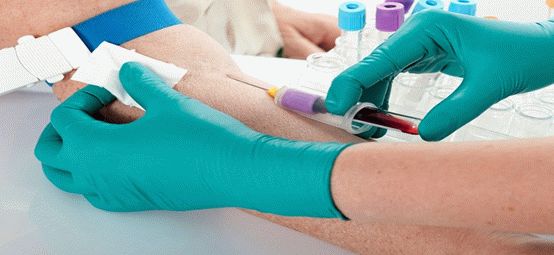Cramps in the feet and fingers of varying degrees of intensity occurred in everyone's life. Involuntary contraction of the muscles of the foot is often described as a sharp pain. It starts from the middle of the leg, goes to the toes. If you touch the painful areas of the foot, you feel muscle tension. Sometimes the muscles are tense to such an extent that it seems that they are about to burst. A cramp can reduce muscles in a minute interval or last for several days. Consider the causes of foot cramps and methods of treatment.
Causes of cramps in the feet and toes
Here are the main factors of development.
Causes of changes in blood biochemistry
In many cases, changes in the biochemical composition of the blood lead to the development of foot cramps. When a person imperceptibly loses valuable substances, the legs more often begin to cramp. Common and significant causes of leg cramps:

These reasons contribute to the frequent occurrence of foot cramps.
How flat feet affect foot cramps
Flat feet have a devastating effect on the feet, becoming. With flat feet, there is a change in the transverse arch of the foot (flattening). There is a change in the toes, a curvature of the big toe. The person experiences symptoms:
- pain due to sprains;
- changes in gait;
- fatigue of the muscles of the foot and lower leg;
- swelling of the legs (at the same time, when pressing on the foot, an unpleasant sensation is felt);
- changes in the knee joints (their degenerative change often occurs - arthrosis);
- difficulty in playing sports, lifting weights;
- frequent formation of corns;
- women have difficulty walking in high heels;
- ingrown nails appear.
Symptoms affect the circulation in the feet, the exchange in the tissues. Pathological changes in the foot and lead to convulsions.

What people with diabetes need to know
Patients with diabetes are in the main risk group for foot cramps. Patients need to pay special attention to the legs. Elevated levels of sugar contribute to diabetic damage to the skin, nerves, blood vessels and joints. Damage to the skin leads to the appearance of non-healing ulcers in the patient, which are difficult to treat. Patients feel pain worse. The foregoing in many cases leads to the formation of convulsions that reduce the muscles.
With diabetes, the condition of small arteries and capillaries deteriorates. They are clogged with tiny particles of glucose. The processes are directly related to malnutrition of the foot tissues with blood, the formation of spasms. Let's say the same about diabetic nerve damage. Patients with diabetes more often than others feel tingling in the foot, "crawling". The skin of the feet is pale and cold to the touch. Damage to the nerves contributes to the occurrence of involuntary contractions of the muscles of the foot due to poor innervation.
Finally, damage to the joints leads to an increase in the load on the foot. The leg gets tired faster, fatigue becomes the main reason for the formation of involuntary contractions of its muscles with the resulting symptoms.
The main symptoms of foot cramps
The main symptoms of the phenomenon:
- Sharp pain in the foot and toes;
- Strong tension in the leg at the site of injury. Often the foot takes on an unnatural curved appearance. It seems to the patient that the foot seems to be taken away;
- Inability to stand on the foot;
- Muscle changes - they become elastic, they are reduced by spasm.
Finger cramps occur unexpectedly, as is the case with other muscles. Often the phenomenon occurs while wearing uncomfortable shoes, if a person is in an uncomfortable position for a long time or stands on his feet. There is a spasm of one finger or several at the same time.
Or in the mornings the most unpleasant and painful for a person. At night, a sharp pain certainly leads to awakening. Sleep is disturbed, it is difficult for a person to fall asleep later. A tense muscle stops hurting gradually. In children, night cramps lead to fear. The child becomes nervous, agitated, often cries.
Sometimes they arise in a person simply from sleeping in a certain position. The condition leads to insomnia, nervousness, inability to concentrate. Remember that during puberty, children can often feel cramps. The process affects the psycho-emotional development. The child learns worse, becomes whiny, nervous, the teenager's sleep is disturbed due to fear of recurring pain.
Is it necessary to diagnose foot cramps?
Diagnosis is needed: a full medical examination will determine the true cause of the involuntary contraction of the muscles of the feet. You will need to visit a therapist to treat muscle disorders. In addition to the examination, the doctor will prescribe the necessary tests and prescribe treatment. As a rule, it is supposed to pass general blood tests, urine tests, blood biochemistry, and X-rays. In some cases, an MRI is prescribed to refute or confirm a dubious diagnosis.
Based on the results of the tests, the doctor will refer you for a consultation and examination with a neuropathologist, cardiologist, endocrinologist, psychiatrist. According to the results of analyzes and examinations of narrow specialists, appropriate treatment is prescribed. If no pathologies are found in the body, prevention plays an important role.
How to prevent foot cramps
To do this, you need to eliminate the cause of the appearance. Tips for those who want to get rid of unpleasant spasms.

- Review your diet. You may have to give up a number of products - smoked, salty, sweet. Include more fresh vitamin vegetables and fruits in your diet.
- Love sports. Exercises will need to be done without much overstrain and overwork. Involuntary spasms will disappear.
- Stop using diuretics. It is allowed to use only as directed by a doctor. Try to limit drinks and foods that accelerate diuresis.
- It is useful to perform exercises that develop stretching of the feet.
- Quit smoking, limit your alcohol intake.
- Exercise regularly in the morning. This will strengthen the muscles of the foot, prevent the occurrence of cramps in the future.
- Always wear comfortable shoes made from quality materials. As a rule, cramps occur in people who choose tight shoes. Women are shown to avoid frequent and prolonged wearing of shoes with high heels.
- A contrast shower will help to avoid leg and foot cramps. Do not make temperature changes too sharp, avoiding the chance to provoke a spasm.
These measures will help get rid of unpleasant spasms of the feet.
What to do in case of seizures
First of all, try to relax. If a cramp occurs at night, do not panic. Try to breathe deeply: gas exchange will saturate the tissues and muscles of the ankle with oxygen, help to relax the muscles. Try to carefully (so as not to provoke injury) stand on your feet. Put your feet together, straighten your back - the exercise will help the muscles relax.
Pull your foot towards you. The action will cause pain, you will have to endure. The muscle will stretch, which will relieve the spasm. If the violation does not go away, try to pinch the foot, massage it - do it immediately. A warming ointment will help. When the attack passes and the pain subsides, it is shown to lie down and raise the legs above the head.
It happens that a leg cramp appears while swimming in a pool, river, sea. The phenomenon is dangerously unpredictable. If the defeat happened in the pool, stop swimming. If a cramp seized the foot in the sea or river, take decisive action:
- roll over onto your back;
- pull the foot towards you;
- just in case, attach a pin to your swimming trunks or swimsuit in advance. The needle will need to prick the foot.
Swimming in too cold water is not recommended. The temperature must be above 18 degrees. If convulsions occur frequently, while the person feels unpleasant suspicious symptoms, it is necessary to treat the underlying disease leading to spasms. It is important not to self-medicate, to use medicines prescribed by a doctor.
Foot cramps are an unpleasant symptom, from which it is quite possible to get rid of. Timely and complete prevention will help keep your feet healthy.











Aromatherapy - Essential oils: table of properties and uses
Cleansing the energy of the apartment with a church candle
Essential oils for aromatherapy: properties, uses and contraindications
Weakness in the body and drowsiness: causes in adults
How to clean an apartment from negativity with a church candle